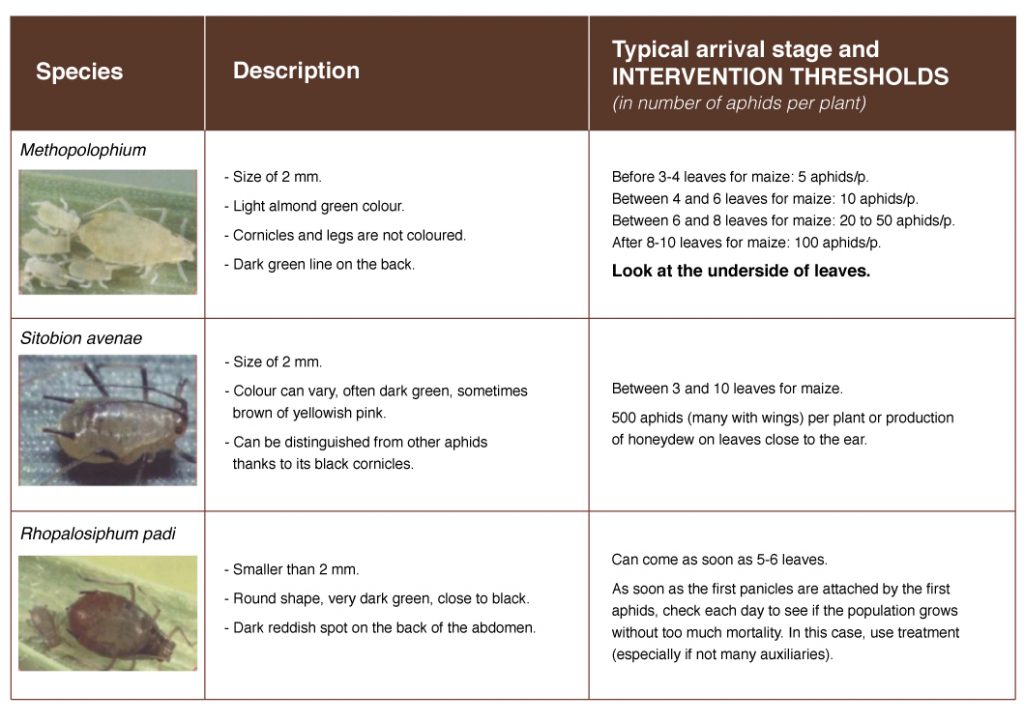Insects
Soil insect pests
Keep in mind:
In risky situations, wireworm damages may affect sorghum. Attacks will mainly occur during the germination stage –emergence. They cause losses during the emergence. Damages will be exacerbated by unfavourable climate conditions. More scattered attacks may also affect more developed plants (2 to 6 leaves) with a wilting of the last leaf associated to a perforation on the collard resulting in the death of the plant.
Advice:
The first prevention rule consists in favouring favourable conditions to a quick emergence of the crop: sufficiently warmed up soil (be careful with too early sowings), well prepared, regular sowing (depth, grain – soil contact), …
It is then possible to use seeds treated with insecticides or to apply a localised soil treatment during sowing*





















